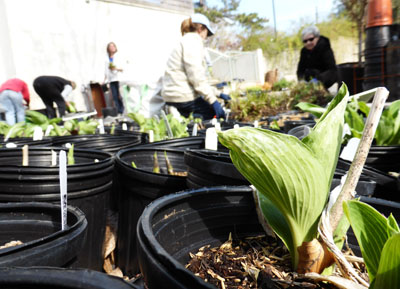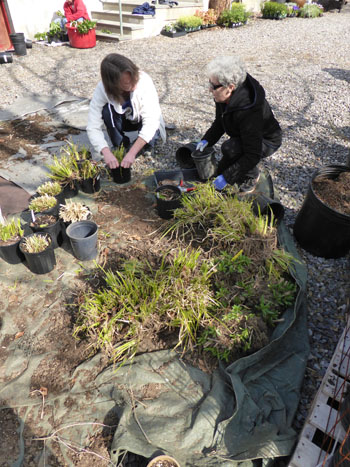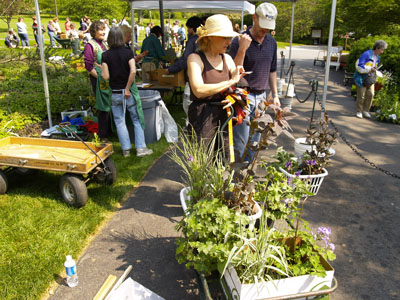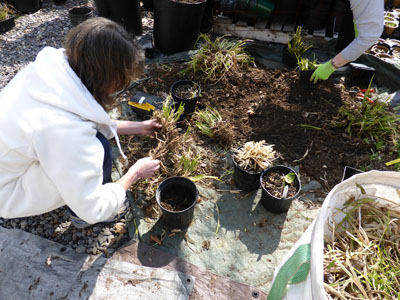It’s Time to Divide! 4 Tips for Dividing Sedges
 It’s that time of year again: the time to divide! With the 19th Annual Members Plant Exchange & Sale right around the corner on Saturday, May 10th, our volunteers are digging, dividing, and repotting plants. They take care to make the transition from our gardens to yours as seamless as possible. This year we have removed a large number of sedges, which we have divided for the exchange in order to increase their vitality and performance in your gardens.
It’s that time of year again: the time to divide! With the 19th Annual Members Plant Exchange & Sale right around the corner on Saturday, May 10th, our volunteers are digging, dividing, and repotting plants. They take care to make the transition from our gardens to yours as seamless as possible. This year we have removed a large number of sedges, which we have divided for the exchange in order to increase their vitality and performance in your gardens.

A mass of sedge removed from the garden is being divided into pots for the Members Plant Exchange and Sale. photo credit: G. Bryne
Here are some tips on how to divide sedges:
1. First, dig out a portion of the sedge mass in accordance in the size of pots you are willing to part with. Next, when you begin to divide your plant in either halves or quarters, you may find a range in difficulty. While some roots pull apart with ease, others will be more stubborn and call for the use of a small garden axe or knife.
2. To insure that the roots of your newly divided plant do not dry out, try to limit their time out of the soil and their exposure to direct sunlight. Choosing an overcast day to repot your plants, even if you are not dividing, can be a beneficial decision.
3. Cut back the plant to the point of new growth, encouraging it to flush out once more; however, it is important to evaluate the state and type of plant before cutting back or pruning.
4. Finally, provide a refreshing drink of water and allow the soil to settle in.
Note: A similar division process can be followed for some herbaceous perennials such as Amsonia hubrichtii and Helleborus x hybridus.

A cart full of garden treasures found at the Members Plant Exchange and Sale. photo credit: H. Kalish
Want to join in on the event, but have no plants to contribute? No problem! Once the Exchange ends, well over a thousand plants remain for sale to members. Most are priced at $1, with just a few larger or exceptional woodies somewhat higher. As an important reminder, both the Exchange and Sale are open only to Associates of the Scott Arboretum, but you are encouraged to become a member and join in the fun. New (first time) members receive tokens redeemable for three plants at the Exchange. With all of the many other benefits of the Scott Arboretum to enjoy it’s never hard to justify the modest membership fee, but with this event you could easily recoup your investment in just a few hours!







No Comments